Hazard assessment of shallow loess landslides induced by rainfall:A case study of Liulin County of Shanxi Province
-
摘要: 黄土高原是我国地质灾害最为发育的地区之一,其中降雨诱发的浅层黄土滑坡又最为典型。以典型黄土地貌区-柳林县为例,应用SINMAP模型,探讨模型在黄土地区的适用性,分析了随着研究区内降雨量的增加,滑坡变形失稳区域的面积变化、分布位置和扩展趋势。研究表明,随着降雨量的增加,滑坡所处位置逐渐由稳定状态向失稳状态发展,位于失稳分区的滑坡数量逐渐增加,说明降雨对该研究区的斜坡稳定性影响较为明显。通过将模拟结果与实际发生的由降雨触发的滑坡灾害进行对比分析,可以得出SINMAP模型在黄土地区,对区域性降雨诱发浅层黄土滑坡稳定性的模拟预测有效,可以用于黄土地区浅层滑坡的稳定性评价研究。Abstract: Loess Plateau is one of the most developed areas of geological disasters in China, and the shallow loess landslide induced by rainfall is the most typical. Taking Liulin County, a typical loess landform area, as an example. With the increase of rainfall in the study area, the area change, distribution location and expansion trend of the landslide deformation instability area are analyzed. The research shows that with the increase of rainfall, the location of landslides gradually develops from a stable state to an unstable state, and the number of landslides in the unstable zone gradually increases, indicating that rainfall has a significant impact on the slope stability of the study area. By comparing the simulation results with the actual rainfall-triggered landslide disasters. It can be concluded that the SINMAP model is effective in simulating and predicting the regional stability of shallow loess landslide induced by rainfall in the loess region, as well as can be used in the stability assessment of shallow landslide in the loess region.
-
Keywords:
- rainfall /
- shallow loess landslides /
- stability /
- SINMAP model
-
0. 引言
三峡工程是当今世界上最大的水利枢纽工程,三峡库区历来就是滑坡地质灾害隐患居多的区域。据统计,三峡水库自2003年首次蓄水以来库区发生了较大变形的滑坡有674处,其中下滑入江的有8个[1-3]。长期以来,国内学者对三峡库区一些重要滑坡的变形破坏特征进行了相关研究,如白水河滑坡、树坪滑坡、卧沙溪滑坡、千将坪滑坡、八字门滑坡、凉水井滑坡、藕塘滑坡、木鱼包滑坡等[4-10]。水土作用对水库堆积层滑坡影响甚大,主要表现为引起滑坡土体物理力学性质的改变与滑坡受力状态的变化。根据水土作用的不同方式变形成因可分为降雨型、浸泡软化型、动水压力型、浮托减重型、复合型五类[11-12]。
石榴树包滑坡是黄蜡石滑坡群中的一个重要滑坡,其长期持续变形对长江航运及人民生命财产安全造成严重威胁,一直以来备受关注。1998年罗先启等[13]采用非线性有限元方法对原石榴树包滑坡在不同运行工况下的位移、应力、塑性区进行了分析。2000年保长汉等[14]采用广义楔形体法对原石榴树包滑坡进行了稳定性计算。杨学堂等[15-16]对原石榴树包滑坡滑体滑动后的速度、滑距及涌浪进行了计算。而后一些学者采用有限元法对原石榴树包滑坡的稳定性及变形规律进行了分析[17-22]。2004年通过削方减载、设置排水等措施对滑坡进行了治理。李秀珍等[23]基于滑坡治理前10多年的变形监测资料,研究了原石榴树包滑坡的影响因素和变形演化特征和规律。钟少波等[24]基于滑坡治理后6年的监测数据,分析了石榴树包滑坡变形监测位移特征及稳定性。以上研究对石榴树包滑坡稳定性进行了分析,对滑坡变形特征分析较少,尤其对滑坡变形机制的研究几乎很少涉及。因此,本章首先通过钻探与物探资料分析石榴树包滑坡滑体的物质结构特征,再通过近两年的自动GPS表面位移、地下水位变化、降雨量等监测对该滑坡的变形特征、变形机理进行深入探讨与研究。
1. 石榴树包滑坡概况
石榴树包滑坡位于湖北省巴东县东瀼口镇黄蜡石村,长江左(北)岸。滑坡原始斜坡坡高约为500 m,斜坡倾向188°,斜坡结构类型为逆向斜坡(图1)。
石榴树包滑坡后缘高程340~350 m,前缘剪出口高程50~60 m,面积约0.25 km2,平均厚度约47.2 m,体积约11.80×106 m3。高程350~250 m间的地形坡角为32°~37°;高程200 m有一平台,为前期治理削方所致,东西长150~170 m,南北宽90~110 m;高程200 m以下地形坡角为30°~45°。石榴树包滑坡边界特征见图2。滑坡左侧边界为一冲沟,左侧边界沟外侧为一小山脊,见图2(a)。滑坡右侧边界为一冲沟,沟中树木茂密,沟外侧可见混凝土护坡,该冲沟将石榴树包滑坡与原台子角滑坡分割开来,见图2(b)。滑坡前缘大部分被江水淹没,出露部分为黏土夹紫红色泥岩、泥质砂岩与粉质砂岩块石,见图2(c)。滑坡后缘地势较为平缓,位于公路下方,与原磨盘湾滑坡的前缘相接,相对中前缘宽度变窄,见图2(d)。由于前期治理,滑坡表面分布有多条排水沟,3个排水平硐。
2. 滑坡物质组成及结构
在石榴树包滑坡建立综合观测站,主剖面上选取适当的6个位置布置钻孔,其中ZK1、ZK2、ZK4、ZK5等4个钻孔为水文孔。滑坡上安装的仪器主要有:GPS自动监测站4个(其中1个基站),地下水位监测仪器8个分布于水文孔中,库水位监测点1个,雨量监测站2个。现场仪器安装布置见图3。
2.1 钻探结果
石榴树包滑坡所处斜坡结构为逆向坡,结构复杂。根据钻孔资料综合分析,滑体物质主要为第四系崩坡积碎块石土,原岩为三叠系巴东组的岩体,经强烈滑动破坏而成,在总体上显示一定的成层性。表层覆盖少量第四系松散的崩坡积土,厚1.5~2 m,见图4(a)。浅层及后缘滑体物质主要为三叠系巴东组第四段的红色砂泥岩、粉砂岩破坏形成的碎石土;中层主要为三叠系巴东组第三段灰绿色、灰黄泥灰岩、灰岩破坏后的散裂结构块石土,从后到前厚度逐渐增大,见图4(b);下层有一层三叠系巴东组第二段紫红色泥岩和粉砂岩破坏后形成的碎石土。
滑带物质为土含碎石,位于基覆界面处,厚度一般为1~2 m,碎石含量10%~30%。土主要为灰黄、灰绿色黏土和粉质黏土。碎石以粒径2~10 mm者居多,呈次棱角-次圆状,并具有一定程度的定向排列,岩性主要为来自巴东组第三段的灰色、灰绿色灰岩、泥灰岩,见图4(c)。
滑床物质由下到上可分为三段,巴东组第一段(T2b1)为灰色、浅灰色的泥灰岩、灰岩,厚约30.30 m;巴东组第二段(T2b2)为紫红色泥岩和粉砂岩,厚度为11.07~32.65 m;巴东组第三段(T2b3)为灰绿色、灰黄色的泥灰岩,厚约11.96 m。滑床基岩岩层产状倾向山内,倾角20°~30°左右,见图4(d)。岩层总体产状70°∠20°。根据现场钻孔的工程地质剖面见图5。
2.2 物探测试结果
在三峡水库处于高水位时期(库水位为173 m),对石榴树包滑坡进行高密度电法物探工作。在滑坡体上共布设1横1纵剖面,分别为300 m和280 m,各剖面上分别布设60个电极和56个电极,电极之间间距为5 m,布设的剖面与钻孔剖面吻合,经过每个钻孔。将高密度电法结果与钻孔岩芯进行对比,见图6。
由图6可以看出:视电阻率呈块团状分布,成层性较差,视电阻率范围约0~800 Ω·m。钻探岩性及物质结构分界面与电阻率分界面较吻合。整体上表层的电阻率值较低,低至20~30 Ω·m,该处泥岩、粉砂岩颗粒粒径较小,土颗粒含量较多所致,与实际情况一致。浅层电阻率值较高的仅分布在钻孔ZK4周边的平台处,电阻率值达500~800 Ω·m,主要为浅灰色泥灰岩夹灰岩碎块石为主。由此可分析得到石榴树包滑坡体结构岩性分布,电阻率值低于50 Ω·m以下的区域主要以泥岩、粉砂岩等黏土岩形成的土石混合体为主,块状分布;电阻率值高于200 Ω·m的区域主要以泥灰岩形成的土石混合体为主,块状分布。50~200 Ω·m的区域主要为前两者的混合物。
根据钻孔资料,结合物探剖面,对石榴树包滑坡体纵剖面物质结构进行了分层,如图7所示。
3. 滑坡变形特征
3.1 历史变形特征
该滑坡为古滑坡,最早有记录的复活变形出现在1980年煤矿导洞施工,而后多次降雨以及人类工程活动出现较大变形。为此在2003年4月—2004年2月对石榴树包滑坡进行了工程治理,治理工程措施主要包含削方压脚、地下排水、地表排水。目前,前期治理工程部分失效,坡体上排水沟损坏堵塞,排水平硐内部垮塌。根据相关资料,石榴树包滑坡在治理后布置了3条监测剖面,现大部分仪器不能工作[24]。根据原监测数据分析,2004年—2009年期间滑坡变形较明显,前缘变形最大达到1.4 m,变形总体呈阶梯状持续变形,变形时间主要在每年5—8月。
3.2 近期变形特征
石榴树包滑坡3个GPS表面位移监测数据、降雨量、库水位随时间的变化曲线见图8。
由图8可以看出,在库水位下降及低水位运行期间,表面位移增加较大,在库水位升高及高水位运行期间,表面位移也在增加但增加较少。可见,石榴树包滑坡表现出动水压力型滑坡的特征,与收集的前期监测数据在变形时间上表现一致。在库水位较低时期,降雨会使滑坡各部分的位移都有小幅增大。GPS3位移量大于GPS2位移量大于GPS1位移量,可见滑坡变形主要发生在中部与后部,前缘变形较小。前缘变形较小这可能是由于前缘渗透性大,水力梯度较小的原因;中后部变形大可能是中后部渗透性小,水力梯度相对较大的原因。总体上,滑坡累计变形量最大未超过8 cm,位移随时间增加缓慢,可见石榴树包滑坡目前处于蠕动变形阶段。
4. 滑坡变形机理分析
4.1 变形影响因素
石榴树包滑坡前缘直抵长江,为变形提供了良好的地形临空条件。滑坡下伏基岩为三叠系巴东组的紫红色、浅灰色泥岩、粉砂岩、泥灰岩的易滑岩组;滑坡体也为易滑岩组形成的土石混合体,因此本身物质易于受雨水的影响而发生软化泥化。滑坡体前缘坡脚为长江,江水对滑体前缘岸坡不断的冲刷、掏蚀,造成滑坡前缘坍塌,抗滑力减小。库水位下降过程中,由于中后部渗透性不良导致滑体内地下水位下降滞后于库水位,由此产生的较大动水压力使滑坡的整体稳定性减小。滑坡体结构较松散,渗透性相对较大,地表水易于汇集和下渗,每逢暴雨从滑坡后缘汇集来的地表水排泄于滑坡体上,使得堆积体饱水、抗剪强度降低,诱发浅表层变形。松散堆积物与下伏基岩接触面形成潜在滑动面,因坡体渗透性大,降雨也易下渗到滑动带,一方面滑动面长期处于地下水位之下,使滑动带(面)强度弱化;另一方面也使局部水力梯度急剧增大,诱发整体变形。
4.2 地下水的影响
由监测数据可知滑坡变形主要发生在库水位下降阶段及低水位运行期,结合滑坡地质形态,石榴树包滑坡属于动水压力型滑坡,可见地下水对滑坡变形有较大影响。
(1)地下水位监测结果
石榴树包滑坡布设的4个地下水位监测孔于2018年4月27日开始获取监测数据,截至2019年10月30日,经历两次库水位升降过程,地下水位随库水位、降雨变化曲线如下图9所示。
由图9可知,ZK1、ZK2、ZK4孔地下水位的的变化曲线与库水位变化趋势一致,变化幅度是随着离库水越远变化越小,而ZK5孔地下水位的变化曲线与库水位变化曲线无相似之处,说明ZK5孔地下水位变化与库水位无关,库水位的变化的影响范围在ZK4与ZK5孔之间。降雨对ZK2与ZK5孔的地下水位影响较大,对ZK1与ZK4孔的地下水位影响甚小。滑坡体地下水位对降雨的响应在库水位下降及低水位期间明显,在库水位上升及高水位运行期间响应不明显,响应雨量阈值约为40 mm。
①第一次升降过程(2018年4月27日—2018年10月14日)
ZK1孔水位升降最大29.84 m,ZK2水位升降最大27.73 m,ZK4孔水位升降最大8.91 m,ZK5孔里面水位升降最大14.08 m。
②第二次升降过程(2019年4月27日—2019年10月14日)
ZK1孔水位升降最大30.09 m,ZK2水位升降最大28.58 m,ZK4孔水位升降最大9.69 m,ZK5孔里面水位升降最大7.12 m。
(2)水力梯度变化特征
两个库水位升降过程的水力梯度随库水位及时间的变化曲线见图10,水力梯度变化特征见表1。
表 1 水力梯度变化特征Table 1. Variation characteristics of hydraulic gradient项目 水力梯度i2−1 水力梯度i4−2 水力梯度i5−4 高水位时 低水位时 降雨时 高水位 低水位 降雨时 高水位 低水位 降雨时 第一次升降 0.009 0.0068 0.67 0.11 0.465 0.068 0.0095 0.161 0.331 第二次升降 0.0097 0.0078 0.75 0.118 0.43 0.167 0.01 0.154 0.138 由图10可见,前三条水力梯度线存在突变,是受降雨影响所致。为便于观察,将受降雨影响小的ZK4与ZK1之间的水力梯度作于图中。可见四条曲线表现出相同的趋势,随着库水位的下降,水力梯度逐步增大,在低水位水力梯度逐渐减小;当库水位上升时,水力梯度快速减小,高水位时趋于稳定。
由表1可知,在剔除降雨影响下,水力梯度i2−1低水位与高水位基本无变化,水力梯度i4−2低水位时约是高水位的4倍,水力梯度i5−4低水位时约是高水位的15倍。当考虑降雨影响时,降雨时的水力梯度i2−1约是高水位的74倍;水力梯度i4−2却在减小,甚至小于高水位的水力梯度;水力梯度i5−4约是高水位的35倍。
综上,在不考虑降雨条件下,在两次循环的下降及低水位过程中,水力梯度i4−2与水力梯度i5−4都较大,水力梯度i2−1较小。在考虑降雨条件下,水力梯度i2−1增大较多,i4−2减小,i5−4增大。说明,滑坡中后部渗透压力较大,前缘在降雨后渗透压力会大幅增大。滑坡体中后部水位比较高,主要受后方山体地下水供给,可见滑坡滑动面大部分都长期处于地下水位以下。
5. 结论
(1)石榴树包滑坡滑坡体物质具有一定成层性,团块状分布,电阻率值低于50 Ω·m以下的区域主要以泥岩、粉砂岩等黏土岩形成的土石混合体为主,电阻率值高于200 Ω·m的区域主要以泥灰岩形成的土石混合体为主。
(2)降雨是石榴树包滑坡复活的主要原因,库水位升降与降雨联合作用使石榴树包滑坡持续变形。库水位下降及低水位运行过程中的变形大于库水位上升及高水位运行过程中的变形。前缘变形较小主要是由于前缘渗透性大,水力梯度较小的原因;中后部变形大主要是由于中后部渗透性小,水力梯度相对较大的原因。
(3)库水位变化主要影响滑坡前缘和中部地下水变化,前缘地下水基本与库水位同步;滑坡后部地下水与库水位基本无关,主要受降雨影响。在不考虑降雨影响下,低水位时水力梯度是高水位时的4~15倍,考虑降雨影响时水力梯度是高水位时的35~74倍,降雨影响较大。
(4)石榴树包滑坡一直处于蠕变阶段,受库水位周期性升降与降雨的影响,其变形将继续发展,还需进一步加强监测。
-
图 1 山西省柳林县地貌分区图[34]
Figure 1. Geomorphological zoning map of Liulin County, Shanxi Province
表 1 模型选取的参数值
Table 1 Parameter values selected by the model
重力加速度/(m·s−2) 湿度/% 内聚力/kPa 内摩擦角/(°) 土体密度/(kg·m−3) 土体的导水系数/(m2·d−1) 下限 上限 下限 上限 9.81 10 3 15 15 24 1540 135 表 2 稳定性分类定义
Table 2 Stability classification definition
序号 条件 类 预测状态 未建模因素的可能影响 1 SI>1.5 1 极稳定 不稳定需要巨大的不稳定因素 2 1.5≥SI>1.25 2 稳定 不稳定需要适度的不稳定因素 3 1.25≥SI>1.0 3 基本稳定 较小的不稳定因素可能导致不稳定 4 1.0≥SI>0.5 4 潜在不稳定 不稳定不需要不稳定因素 5 0.5≥ SI>0 5 不稳定 稳定因素可能是稳定的原因 6 SI=0 6 极不稳定 稳定需要稳定因素 -
[1] 梁四宝. 明清晋陕黄土高原的水土流失与水土保持[J]. 中国水土保持,1990(6):50 − 52. [LIANG Sibao. Soil erosion and water and soil conservation in the loess plateau of Shanxi and Shaanxi in the Ming and Qing Dynasties[J]. Soil and Water Conservation in China,1990(6):50 − 52. (in Chinese with English abstract) [2] 彭建兵, 林鸿州, 王启耀, 等. 黄土地质灾害研究中的关键问题与创新思路[J]. 工程地质学报,2014,22(4):684 − 691. [PENG Jianbing, LIN Hongzhou, WANG Qiyao, et al. The critical issues and creative concepts in mitigation research of loess geological hazards[J]. Journal of Engineering Geology,2014,22(4):684 − 691. (in Chinese with English abstract) [3] TANG Y M, XUE Q, LI Z G, et al. Three modes of rainfall infiltration inducing loess landslide[J]. Natural Hazards,2015,79(1):137 − 150. DOI: 10.1007/s11069-015-1833-4
[4] 巨玉文, 齐琼, 董震, 等. 山西西部地区黄土地质灾害与降雨的关联性分析[J]. 自然灾害学报,2016,25(1):81 − 87. [JU Yuwen, QI Qiong, DONG Zhen, et al. Analysis of relevance between loess geological disasters and rainfalls in the western area of Shanxi Province[J]. Journal of Natural Disasters,2016,25(1):81 − 87. (in Chinese with English abstract) [5] LI Z, ZHENG F L, LIU W Z, et al. Spatially downscaling GCMs outputs to project changes in extreme precipitation and temperature events on the loess plateau of China during the 21st Century[J]. Global and Planetary Change,2012,82/83:65 − 73. DOI: 10.1016/j.gloplacha.2011.11.008
[6] WANG G L, LI T L, XING X L, et al. Research on loess flow-slides induced by rainfall in July 2013 in Yan’an, NW China[J]. Environmental Earth Sciences,2015,73(12):7933 − 7944. DOI: 10.1007/s12665-014-3951-9
[7] 唐亚明, 薛强, 李政国, 等. 基于单体和区域尺度的黄土滑坡监测预警方法与实例[J]. 灾害学,2015,30(4):91 − 95. [TANG Yaming, XUE Qiang, LI Zhengguo, et al. Loess landslide monitoring and early-warning methods and practices on scale of single slope and regional scope[J]. Journal of Catastrophology,2015,30(4):91 − 95. (in Chinese with English abstract) DOI: 10.3969/j.issn.1000-811X.2015.04.018 [8] 吴赛男, 田毅. 我国单体滑坡模拟和区域滑坡易发性评价研究进展[J]. 中国地质灾害与防治学报,2019,30(3):113 − 119. [WU Sainan, TIAN Yi. Review on progress of individual landslide simulation and assessment of reginal landslide susceptibility in China[J]. The Chinese Journal of Geological Hazard and Control,2019,30(3):113 − 119. (in Chinese with English abstract) [9] 姜彤, 马莎, 李永新. 抗剪强度c, φ值概率分布对边坡可靠性分析的影响[J]. 华北水利水电学院学报,2004,25(3):46 − 49. [JIANG Tong, MA Sha, LI Yongxin. The study of effect on the reliability of rock slope by different probability distribution of shear strength c, φ[J]. Journal of North China Institute of Water Conservancy and Hydroelectric Power,2004,25(3):46 − 49. (in Chinese with English abstract) [10] 曾亚武, 田伟明. 边坡稳定性分析的有限元法与极限平衡法的结合[J]. 岩石力学与工程学报,2005,24(增刊 2):5355 − 5359. [ZENG Yawu, TIAN Weiming. Slope stability analysis by combining fem with limit equilibrium method[J]. Chinese Journal of Rock Mechanics and Engineering,2005,24(Sup 2):5355 − 5359. (in Chinese with English abstract) [11] 郭子仪, 范振华, 朱云升, 等. 边坡稳定性分析中的有限元极限平衡法[J]. 武汉理工大学学报(交通科学与工程版),2014,38(1):79 − 84. [GUO Ziyi, FAN Zhenhua, ZHU Yunsheng, et al. Finite element and limit equilibrium method applied on the stability analysis of road slope[J]. Journal of Wuhan University of Technology (Transportation Science & Engineering),2014,38(1):79 − 84. (in Chinese with English abstract) [12] 崔志杰. 灌溉条件下黄土阶地斜坡区域稳定性评价: 以黑台为例[D]. 兰州: 兰州大学, 2017 CUI Zhijie. Slope stability assessment of irrigated loess terraces—A case study at heitai, Gansu Province, China[D]. Lanzhou: Lanzhou University, 2017. (in Chinese with English abstract)
[13] 张永波. 斜坡稳定性分析的模糊综合评判方法[J]. 太原工业大学学报,1996,27(1):59 − 63. [ZHANG Yongbo. Fuzzy mathematics method of the analysis of slope stability[J]. Journal of Taiyuan University of Technology,1996,27(1):59 − 63. (in Chinese with English abstract) [14] 王亚强, 王兰民, 张小曳. GIS支持下的黄土高原地震滑坡区划研究[J]. 地理科学,2004,24(2):170 − 176. [WANG Yaqiang, WANG Lanmin, ZHANG Xiaoye. GIS based seismic landslide zonation of the loess plateau[J]. Scientia Geographica Sinica,2004,24(2):170 − 176. (in Chinese with English abstract) DOI: 10.3969/j.issn.1000-0690.2004.02.007 [15] 唐亚明, 程秀娟, 薛强, 等. 基于层次分析法的黄土滑塌风险评价指标权重分析[J]. 中国地质灾害与防治学报,2012,23(4):40 − 46. [TANG Yaming, CHENG Xiujuan, XUE Qiang, et al. Weights analysis of loess collapse risk assessing factors based on analytical hierarchy process[J]. The Chinese Journal of Geological Hazard and Control,2012,23(4):40 − 46. (in Chinese with English abstract) [16] 戴悦. 基于信息量模型的三峡库区滑坡区域危险性评价方法研究[D]. 北京: 清华大学, 2013 DAI Yue. Study on the method of regional early warning of landslide in Three Gorges area based on information model[D]. Beijing: Tsinghua University, 2013. (in Chinese with English abstract)
[17] 殷坤龙, 朱良峰. 滑坡灾害空间区划及GIS应用研究[J]. 地学前缘,2001,8(2):279 − 284. [YIN Kunlong, ZHU Liangfeng. Landslide hazard zonation and application of gis[J]. Earth Science Frontiers,2001,8(2):279 − 284. (in Chinese with English abstract) DOI: 10.3321/j.issn:1005-2321.2001.02.010 [18] 戴福初, 姚鑫, 谭国焕. 滑坡灾害空间预测支持向量机模型及其应用[J]. 地学前缘,2007,14(6):153 − 159. [DAI Fuchu, YAO Xin, TAN Guohuan. Landslide susceptibility mapping using support vector machines[J]. Earth Science Frontiers,2007,14(6):153 − 159. (in Chinese with English abstract) DOI: 10.3321/j.issn:1005-2321.2007.06.019 [19] 许冲, 徐锡伟. 基于不同核函数的2010年玉树地震滑坡空间预测模型研究[J]. 地球物理学报,2012,55(9):2994 − 3005. [XU Chong, XU Xiwei. The 2010 Yushu earthquake triggered landslides spatial prediction models based on several kernel function types[J]. Chinese Journal of Geophysics,2012,55(9):2994 − 3005. (in Chinese with English abstract) DOI: 10.6038/j.issn.0001-5733.2012.09.018 [20] DAI F C, LEE C F. Landslide characteristics and slope instability modeling using GIS, Lantau Island, Hong Kong[J]. Geomorphology,2002,42(3/4):213 − 228.
[21] 方然可, 刘艳辉, 苏永超, 等. 基于逻辑回归的四川青川县区域滑坡灾害预警模型[J]. 水文地质工程地质,2021,48(1):181 − 187. [FANG Ranke, LIU Yanhui, SU Yongchao, et al. A early warning model of regional landslide in Qingchuan County, Sichuan Province based on logistic regression[J]. Hydrogeology & Engineering Geology,2021,48(1):181 − 187. (in Chinese with English abstract) [22] BISWAJEET P, SARO L. Utilization of optical remote sensing data and GIS tools for regional landslide hazard analysis using an artificial neural network model[J]. Earth Science Frontiers,2007,14(6):143 − 151. DOI: 10.1016/S1872-5791(08)60008-1
[23] 杨华阳, 许向宁, 杨鸿发. 基于证据权法的九寨沟地震滑坡危险性评价[J]. 中国地质灾害与防治学报,2020,31(3):20 − 29. [YANG Huayang, XU Xiangning, YANG Hongfa. The Jiuzhaigou co-seismic landslide hazard assessment based on weight of evidence method[J]. The Chinese Journal of Geological Hazard and Control,2020,31(3):20 − 29. (in Chinese with English abstract) [24] SIFA S F, MAHMUD T, TARIN M A, et al. Event-based landslide susceptibility mapping using weights of evidence (WoE) and modified frequency ratio (MFR) model: A case study of Rangamati district in Bangladesh[J]. Geology, Ecology, and Landscapes,2020,4(3):222 − 235. DOI: 10.1080/24749508.2019.1619222
[25] TANG Y M, FENG F, GUO Z Z, et al. Integrating principal component analysis with statistically-based models for analysis of causal factors and landslide susceptibility mapping: a comparative study from the loess plateau area in Shanxi (China)[J]. Journal of Cleaner Production,2020,277:124159. DOI: 10.1016/j.jclepro.2020.124159
[26] 康超. 确定性模型在黄土沟壑区斜坡稳定性预测中的应用[D]. 兰州: 兰州大学, 2010 KANG Chao. Application of deterministic model in analysis and prediction of stability in loess gully area[D]. Lanzhou: Lanzhou University, 2010. (in Chinese with English abstract)
[27] MICHEL G P, KOBIYAMA M, GOERL R F. Comparative analysis of SHALSTAB and SINMAP for landslide susceptibility mapping in the Cunha River Basin, southern Brazil[J]. Journal of Soils and Sediments,2014,14(7):1266 − 1277. DOI: 10.1007/s11368-014-0886-4
[28] 武利. 基于SINMAP模型的区域滑坡危险性定量评估及模型验证[J]. 地理与地理信息科学,2012,28(2):35 − 39. [WU Li. A SINMAP-based quantitative assessment and model verification of regional landslide hazard[J]. Geography and Geo-Information Science,2012,28(2):35 − 39. (in Chinese with English abstract) [29] 庄建琦, 彭建兵, 张利勇. 不同降雨条件下黄土高原浅层滑坡危险性预测评价[J]. 吉林大学学报(地球科学版),2013,43(3):867 − 876. [ZHUANG Jianqi, PENG Jianbing, ZHANG Liyong. Risk assessment and prediction of the shallow landslide at different precipitation in loess plateau[J]. Journal of Jilin University (Earth Science Edition),2013,43(3):867 − 876. (in Chinese with English abstract) [30] KIM D, IM S, LEE S H, et al. Predicting the rainfall-triggered landslides in a forested mountain region using TRIGRS model[J]. Journal of Mountain Science,2010,7(1):83 − 91. DOI: 10.1007/s11629-010-1072-9
[31] 夏蒙, 王家鼎, 谷天峰, 等. 基于TRIGRS模型的浅层黄土滑坡破坏概率评价[J]. 兰州大学学报(自然科学版),2013,49(4):453 − 458. [XIA Meng, WANG Jiading, GU Tianfeng, et al. Evaluation of shallow loess landslide destruction probability based on TRIGRS model[J]. Journal of Lanzhou University (Natural Sciences),2013,49(4):453 − 458. (in Chinese with English abstract) [32] 刘磊, 殷坤龙, 徐勇, 等. 考虑降雨及库水位变动的区域滑坡灾害稳定性评价研究[J]. 岩石力学与工程学报,2018,37(2):403 − 414. [LIU Lei, YIN Kunlong, XU Yong, et al. Evaluation of regional landslide stability considering rainfall and variation of water level of reservoir[J]. Chinese Journal of Rock Mechanics and Engineering,2018,37(2):403 − 414. (in Chinese with English abstract) [33] 文杰. 基于SCOOPS3D和TRIGRS模型的区域性降雨滑坡危险性评价: 以陇南武都区典型地段为例[D]. 北京: 中国地质大学(北京), 2019 WEN Jie. Regional rainfall landslide hazard assessment based on SCOOPS3D and TRIGRS models—A case study in typical areas in wudu district of south Gansu Province[D]. Beijing: China University of Geosciences, 2019. (in Chinese with English abstract)
[34] 李鹏强. 火电厂地下水污染溶质运移数值模拟研究[D]. 太原: 太原理工大学, 2012 LI Pengqiang. Numerical simulation study of solute transportion during groundwater polluted in thermal power plant[D]. Taiyuan: Taiyuan University of Technology, 2012. (in Chinese with English abstract)
[35] PACK R T, TARBOTON D G, GOODWIN C N. The SINMAP approach to terrain stability mapping. In: MOORE D, HUNGER O, eds. Proceedings of 8th congress of the International Association of Engineering Geology. Netherlands: A Balkema Publisher, 1998. 1157-1165.
[36] 兰恒星, 周成虎, 伍法权, 等. GIS支持下的降雨型滑坡危险性空间分析预测[J]. 科学通报,2003(5):507 − 512. [LAN Hengxin, ZHOU Chenghu, WU Faquan, et al. Spatial analysis and prediction of the risk of rainfall-type landslides supported by GIS[J]. Chinese Science Bulletin,2003(5):507 − 512. (in Chinese with English abstract) DOI: 10.3321/j.issn:0023-074X.2003.05.021 [37] 赵敦江, 任六平, 卫中平. 吕梁地区暴雨规律分析[J]. 山西水土保持科技,2001,3:6 − 8. [ZHAO Dunjiang,REN Liuping,WEI Zhongping. Analysis on the law of rainstorm in Luliang area[J]. Soil and Water Conservation Science and Technology in Shanxi,2001,3:6 − 8. (in Chinese) -
期刊类型引用(7)
1. 刘琛尧,晏启祥,孙润方,王绪,邓宝华,陈耀. 基于三维离散-连续耦合的岩溶隧道突水破坏模式研究. 水文地质工程地质. 2024(02): 163-171 .  百度学术
百度学术
2. 盖孝乾. 隐伏溶洞对隧道围岩应力及地表沉降的影响研究. 工程机械与维修. 2023(01): 67-69 .  百度学术
百度学术
3. 郭书兰,阎长虹,俞良晨,闫超,李慧,徐源. 无锡浅埋岩溶发育特征及其与隧道安全距离研究. 南京大学学报(自然科学). 2023(05): 890-899 .  百度学术
百度学术
4. 孙伟. 广东省英德市城南社区岩溶塌陷发育特征及成因分析. 中国地质灾害与防治学报. 2023(05): 74-80 .  本站查看
本站查看
5. 朱丹晖,聂浩. 大溶腔小跨度公路隧道溶洞处理方案研究. 铁道勘察. 2023(06): 144-150+162 .  百度学术
百度学术
6. 杨刚. 岩溶地段隧道施工安全管理关键措施研究. 价值工程. 2022(32): 28-30 .  百度学术
百度学术
7. 王亚强,王先龙,伍尚前,张建博. 隧道岩溶水引排及防治措施研究. 现代隧道技术. 2022(S1): 866-875 .  百度学术
百度学术
其他类型引用(3)





 下载:
下载:










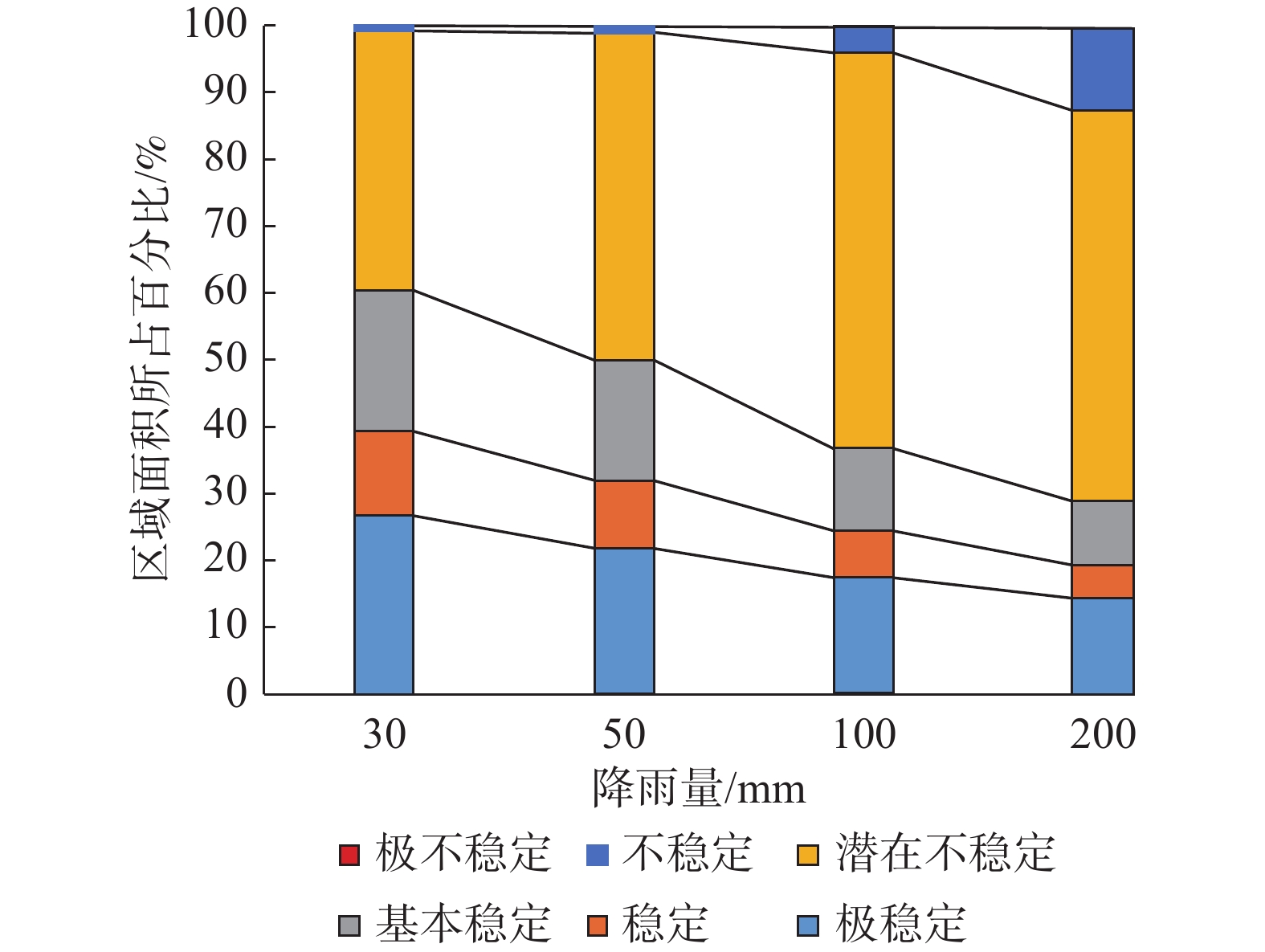
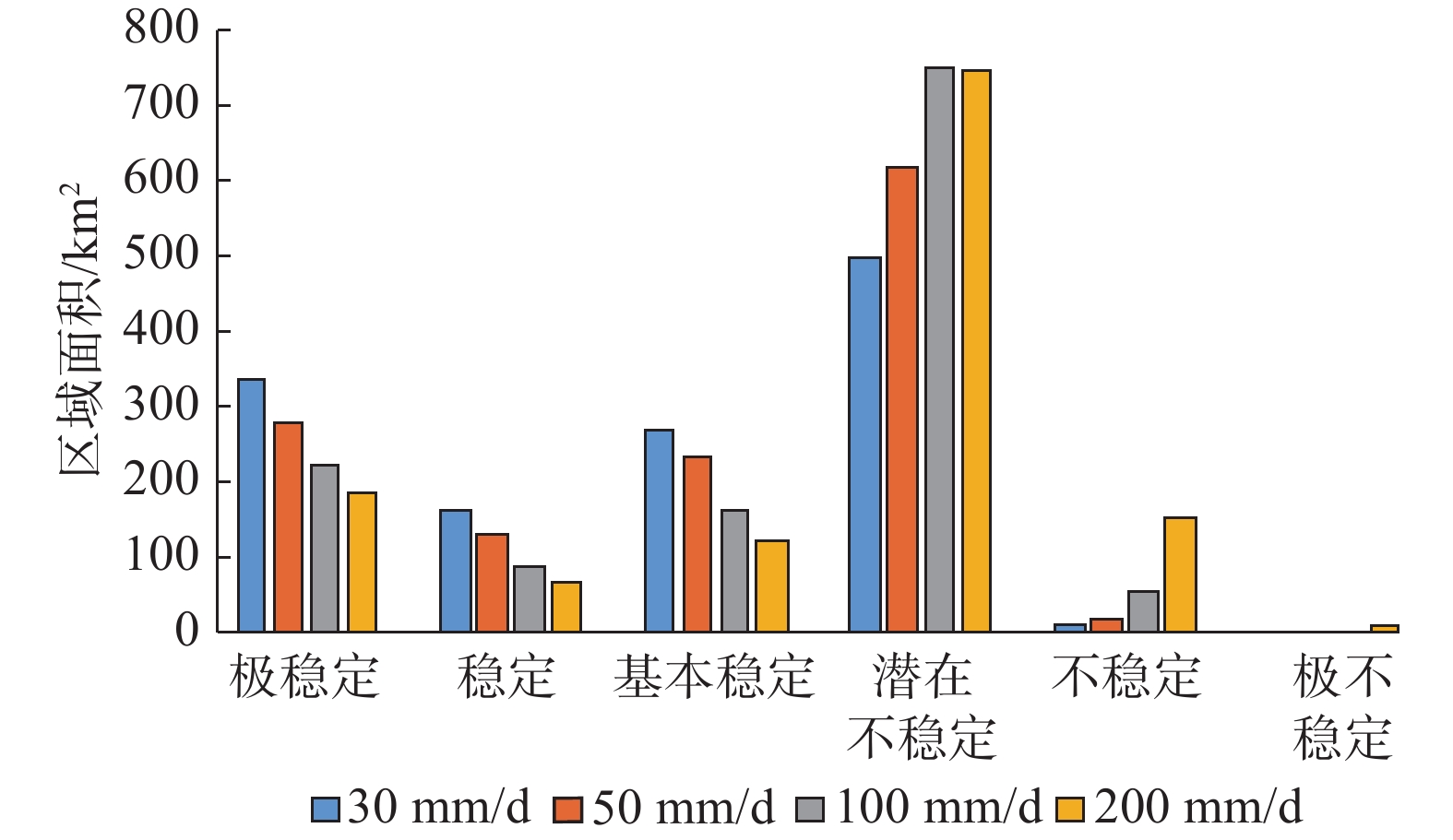

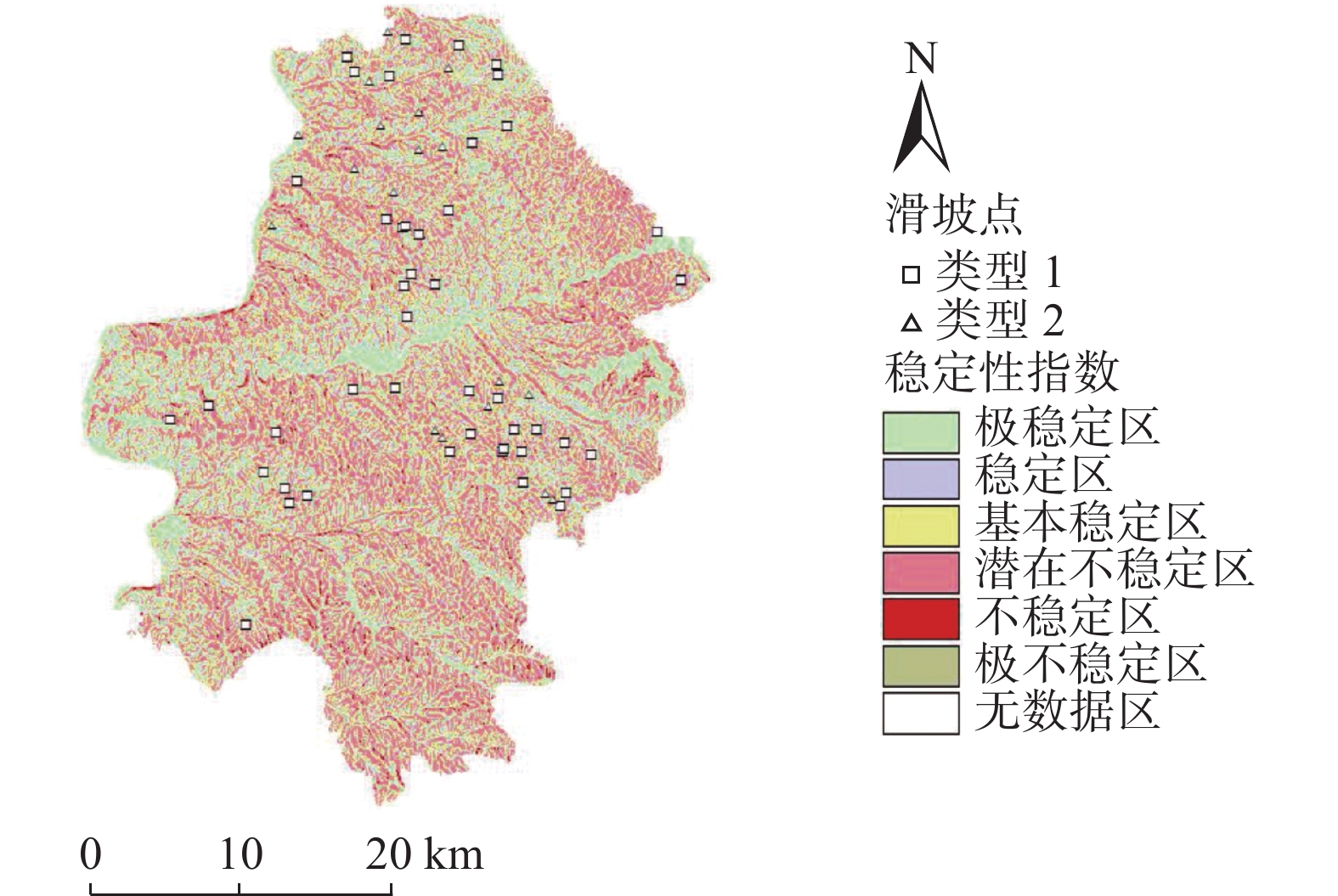
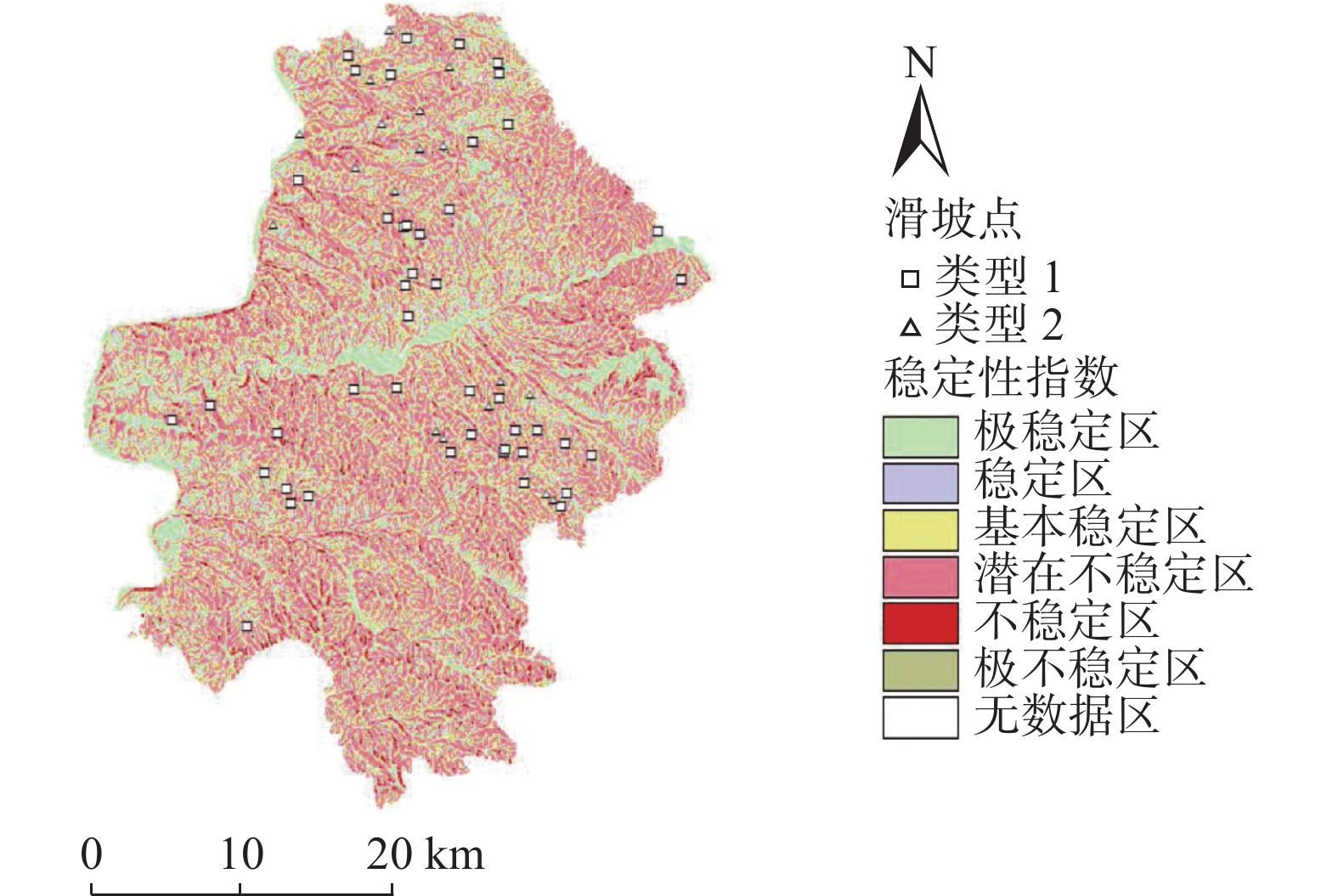


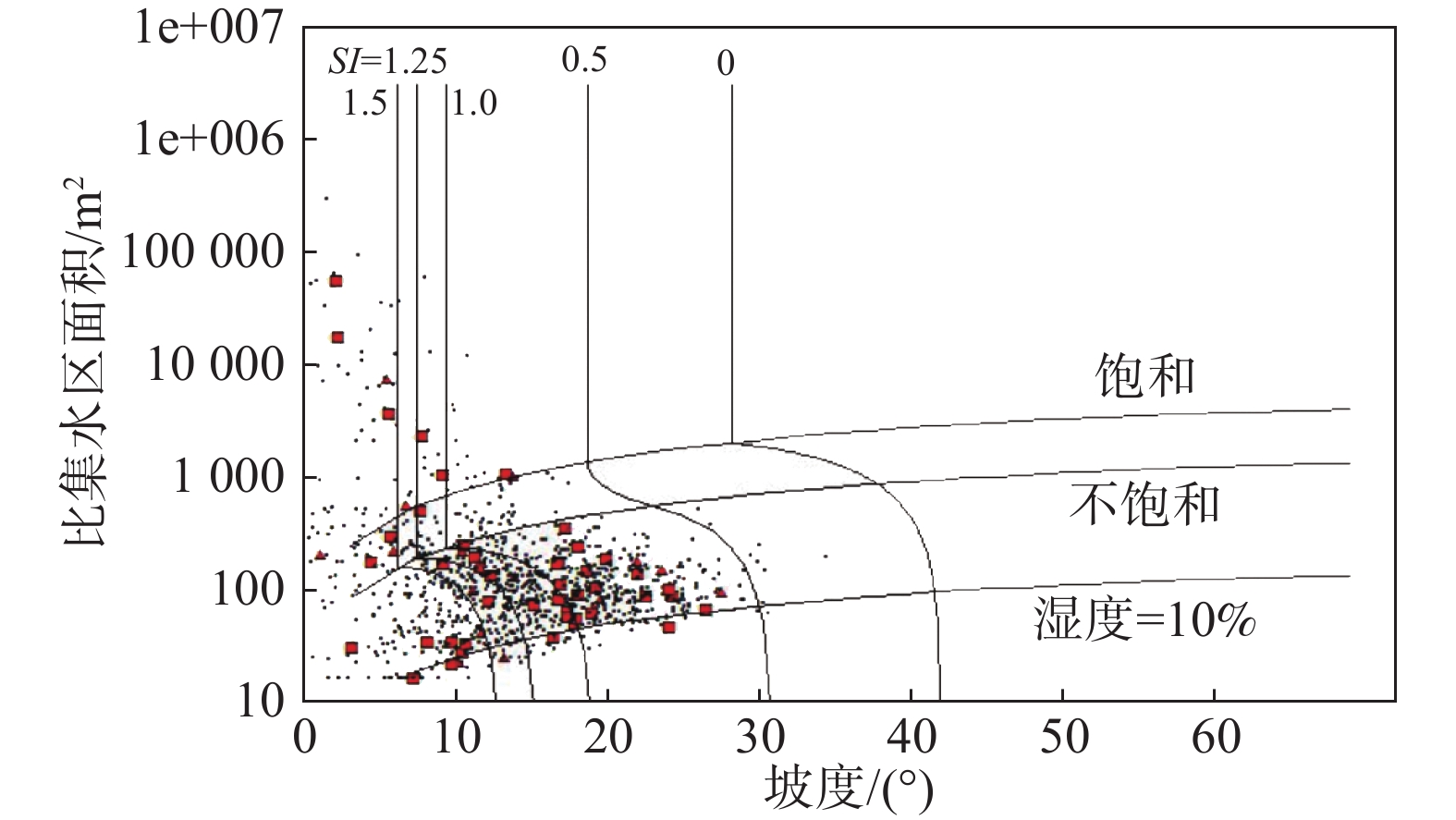
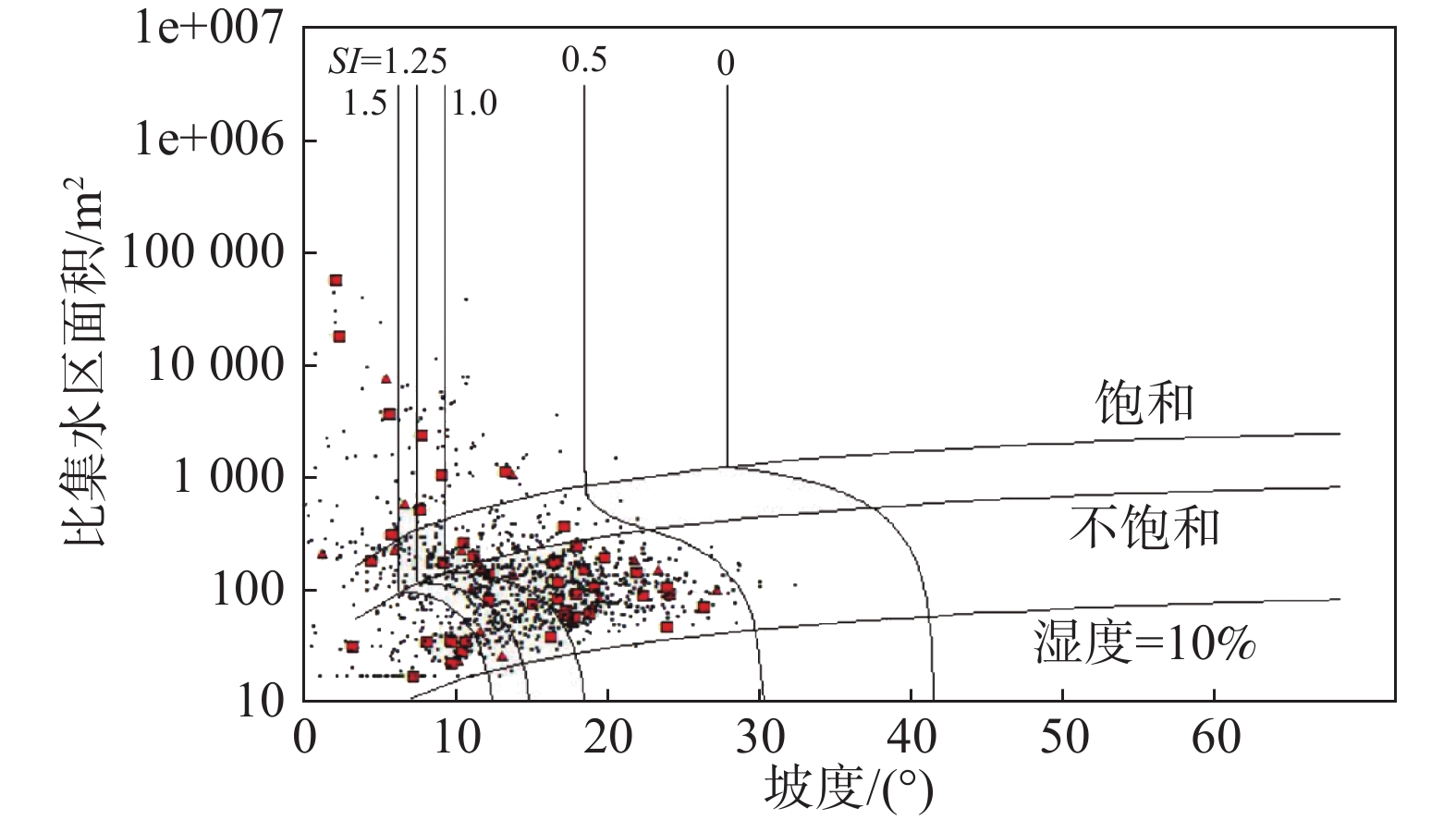
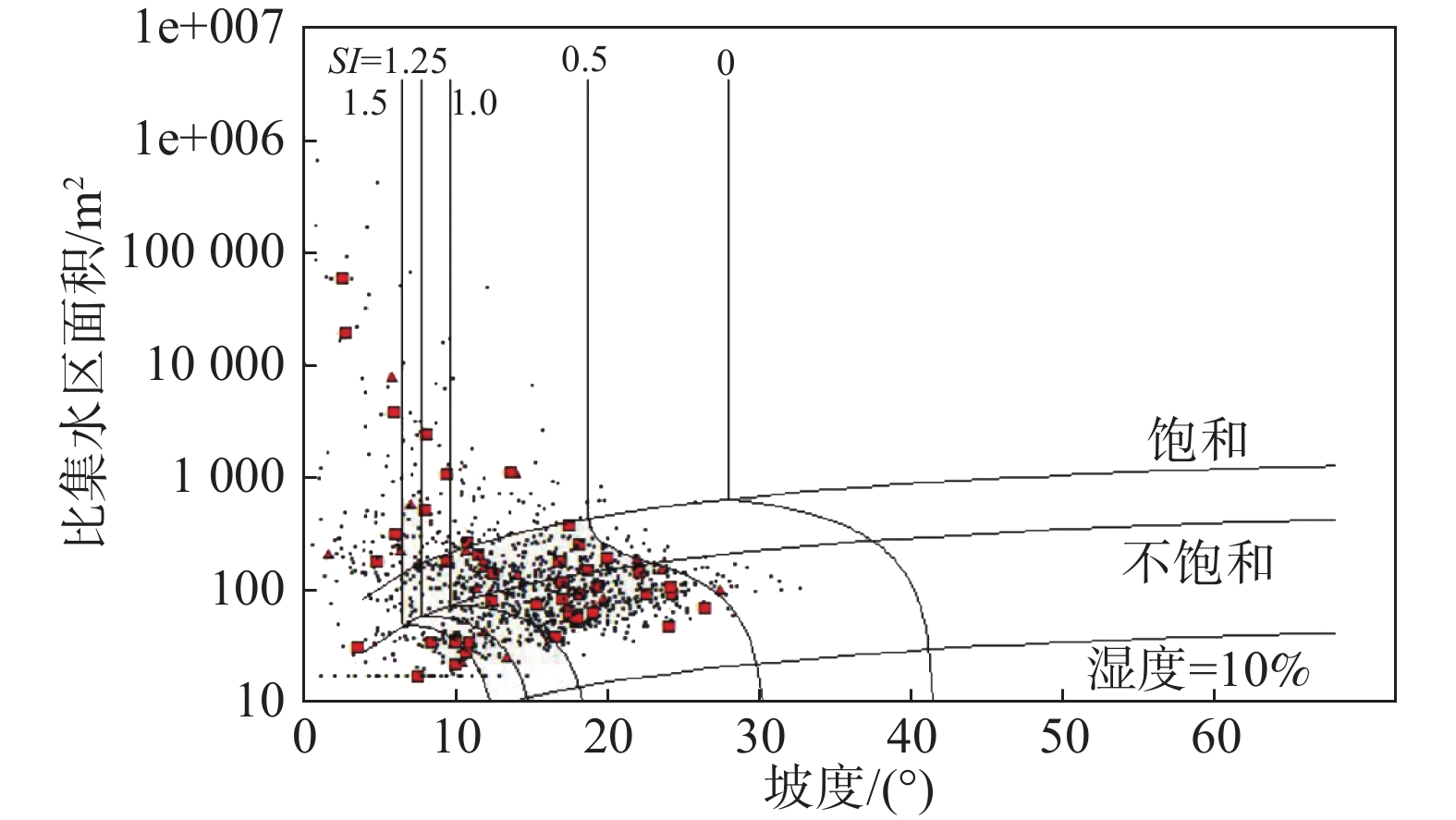
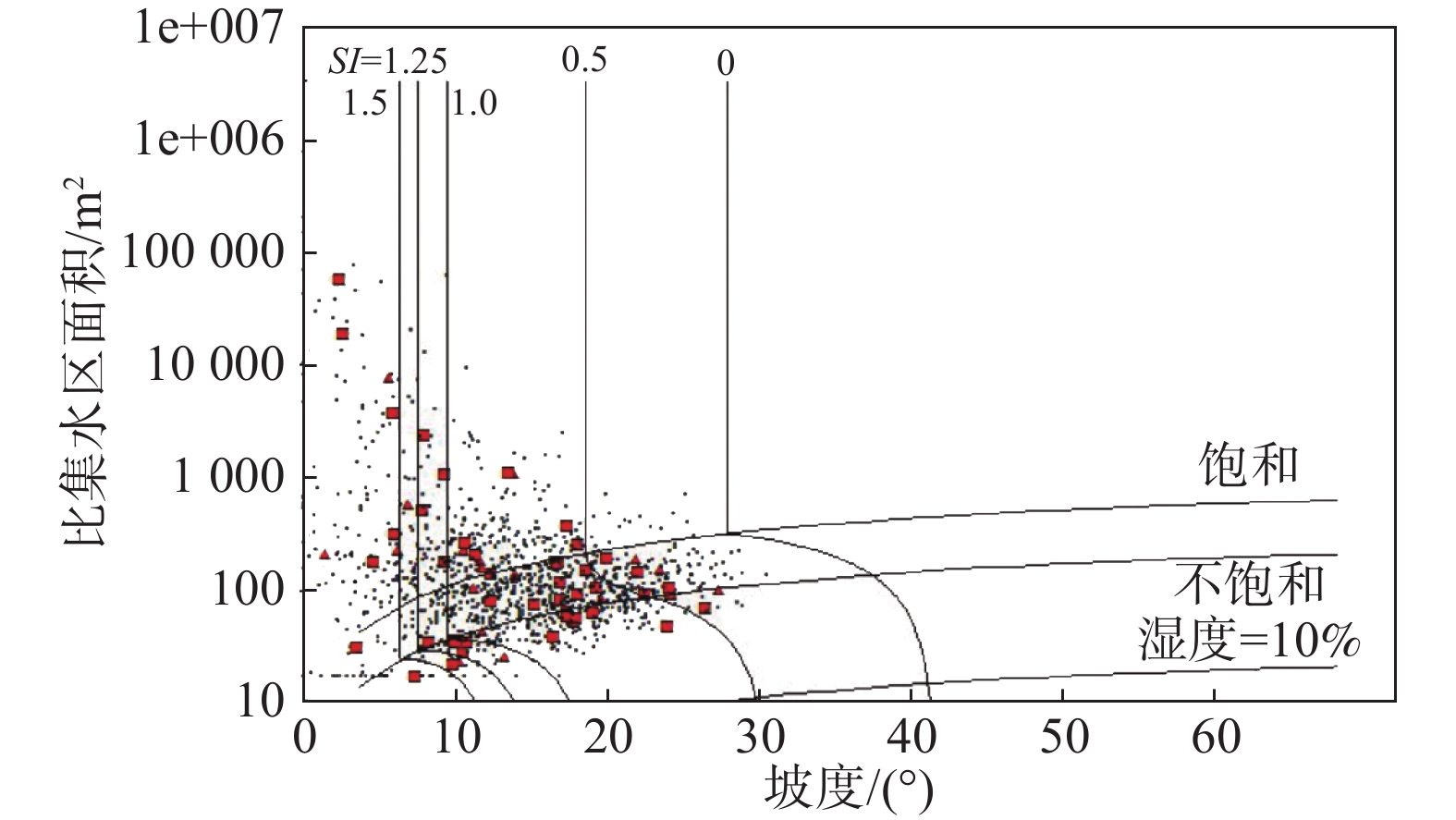
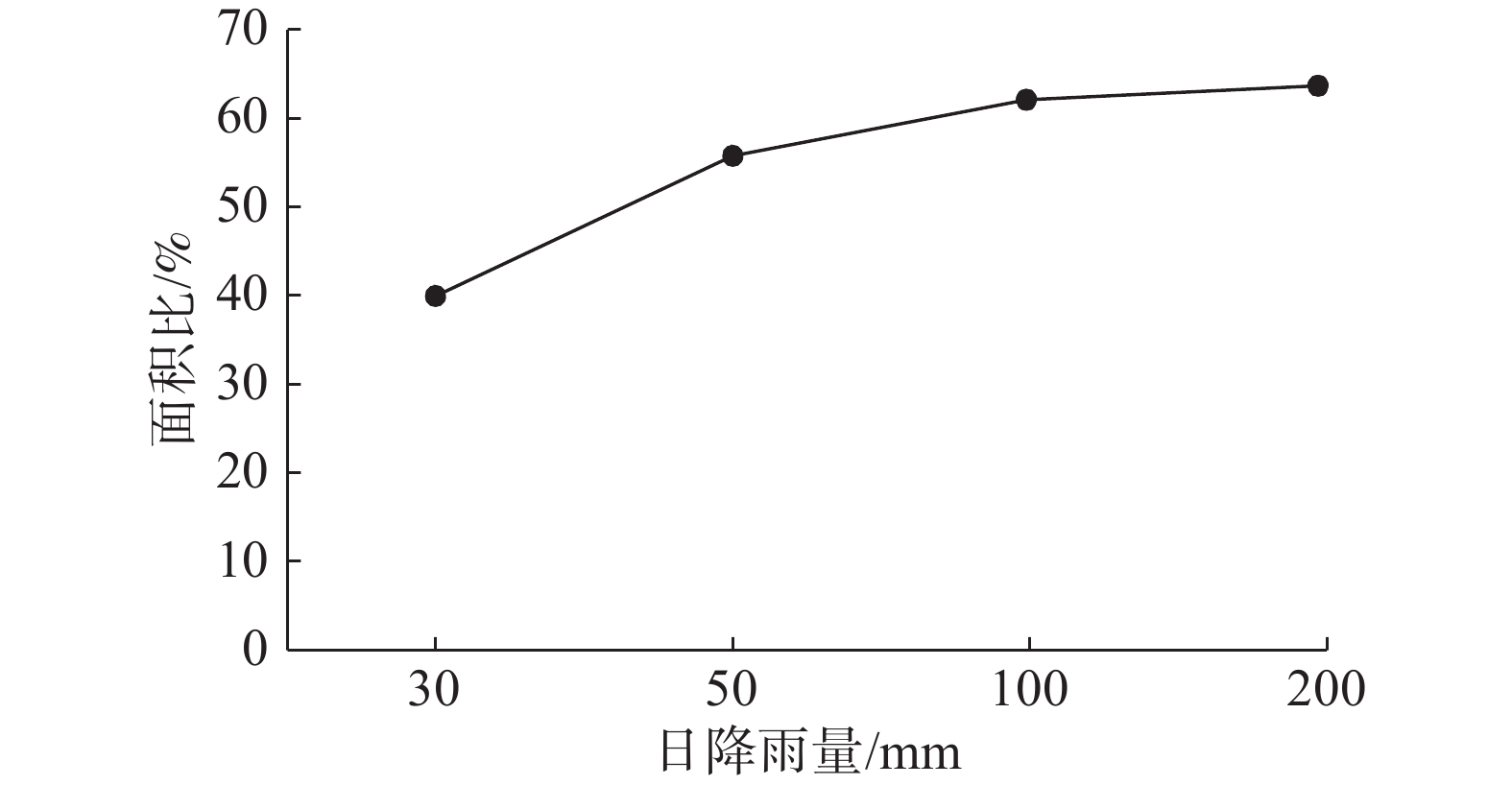
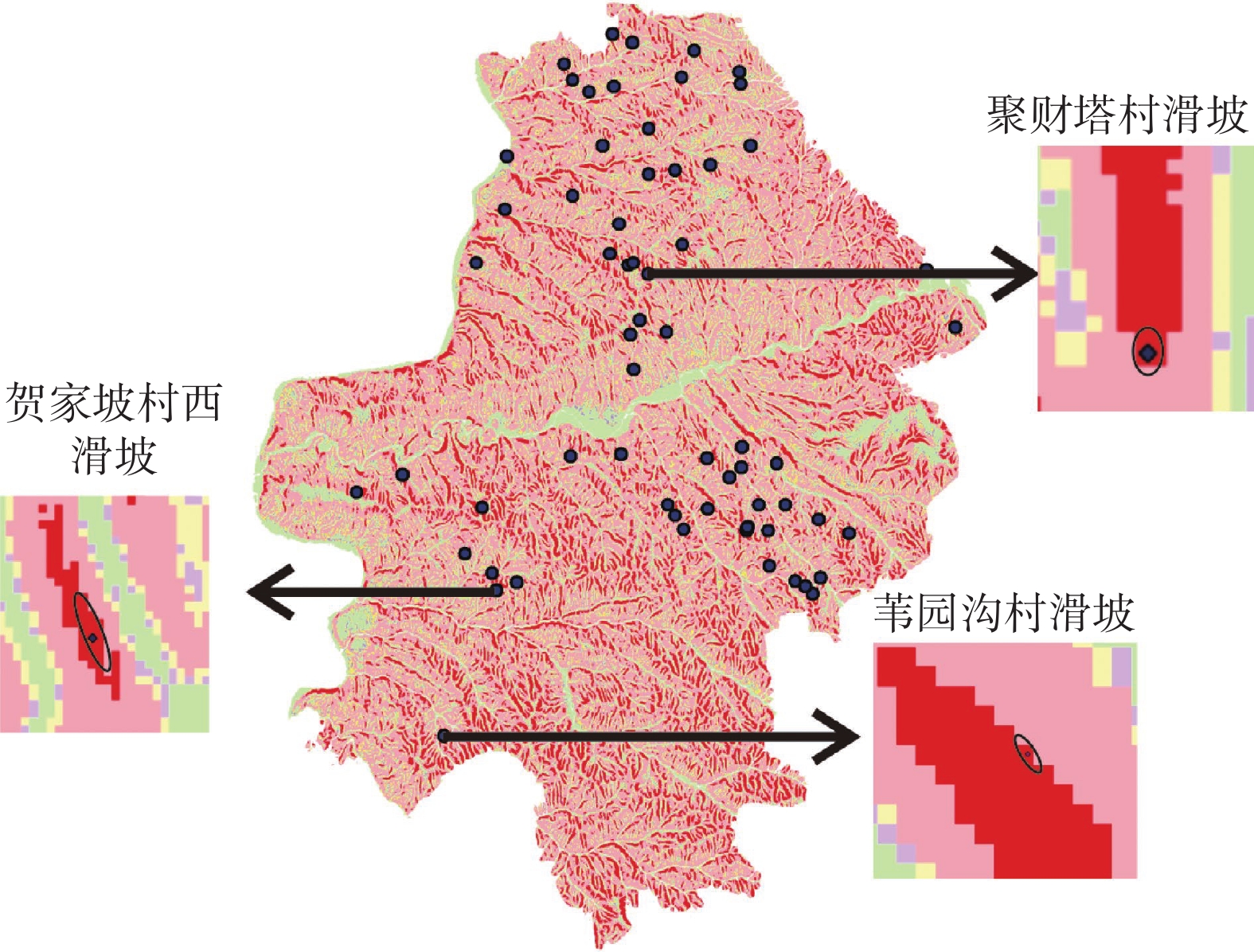
 邮件订阅
邮件订阅 RSS
RSS